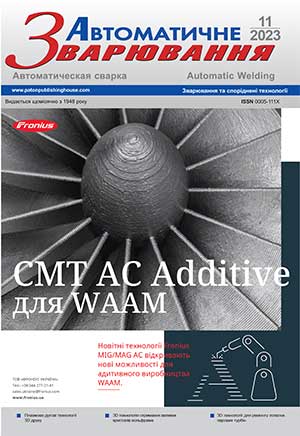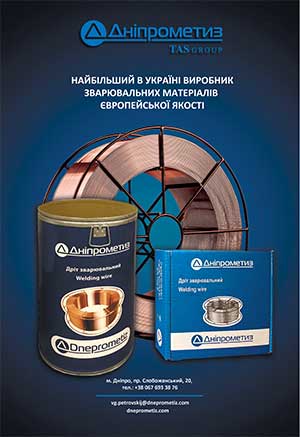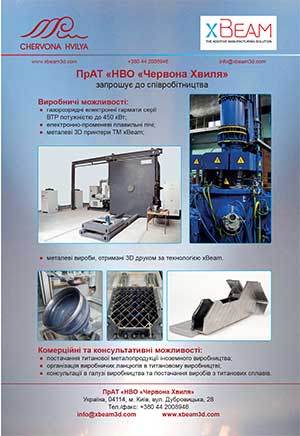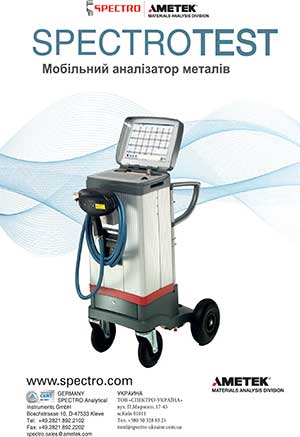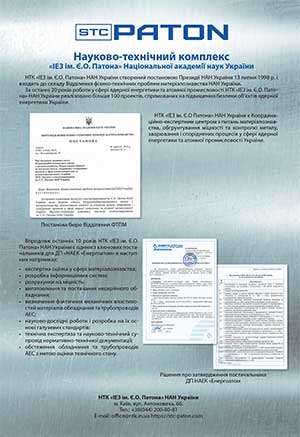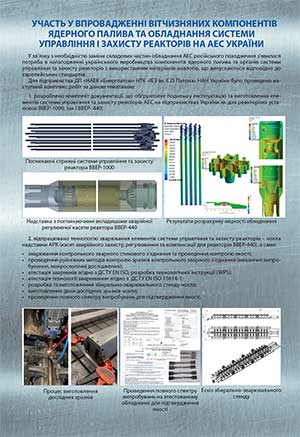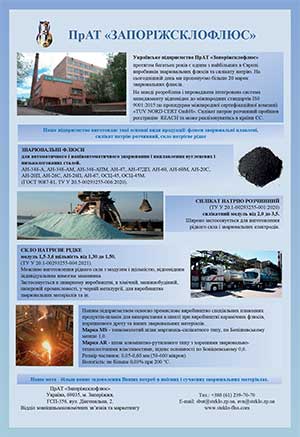| 2023 №11 (08) |
DOI of Article 10.37434/as2023.11.09 |
2023 №11 (01) |
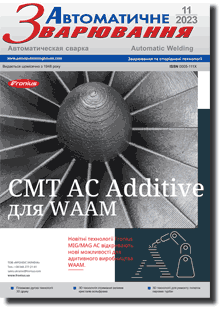
"Avtomatychne Zvaryuvannya" (Automatic Welding), #11, 2023, pp. 76-83
Study of the influence of FDM 3D printing parameters on formation processes, structure and properties of polylactide products
O.P. Masyuchok, M.V. Yurzhenko, R.V. Kolisnyk, A.O. Shadrin, V.Yu. Kondratenko, M.G. Korab
E.O. Paton Electric Welding Institute of the NAS of Ukraine. 11 Kazymyr Malevych Str., 03150, Kyiv, Ukraine. E-mail: office@paton.kiev.uaBased on the results of mathematical modeling and theoretical research works, it was established that the most influential factors of 3D printing, affecting the quality and time of end products formation, are extruder die temperature, layers height, speed of printing head movement during the formation of products, as well as simultaneous fabrication of several products within one cycle. In the work, the modes of the FDM 3D printing process were worked out and the regularities of the influence of the mentioned parameters on the structure and properties of resulted 3D polylactide products were established. The parameters of products formation were experimentally determined, which provide the production of 3D objects with predicted properties: maximum strength (98% of filament strength), high aesthetic quality (surface smoothness and resolution) and products with minimal investments of time during their production. Ref. 16, Fig. 10, Tab. 4.
Keywords: additive formation, FDM 3D printing technology, polylactide, functional 3D product, filament
Received: 23.10.2023
References
1. Ngo, T.D, Kashani, A., Imbalzano, G. et al. (2018) Additive manufacturing (3D printing): a review of materials, methods, applications and challenges. Composites Part B: Engineering, 143, 172-196. https://doi.org/10.1016/j.compositesb.2018.02.0122. Jan Yang Jiquan, Zheng Mei, Yang Jianfei et al. (2016) Introduction to 3D printing technology [M]. Nanjing, Nanjing Normal University Press.
3. Shahrubudin, N., Lee, T.C., Ramlan, R. (2019) An overview on 3D printing technology: technological, materials and applications. Procedia Manuf., 35, 1286-1296. https://doi.org/10.1016/j.promfg.2019.06.089
4. Kristiawan, R.B., Imaduddin, F., Ariawan, D., Ubaidillah, Zainal Arifin (2021) A review on the fused deposition modeling (FDM) 3D printing: Filament processing, materials, and printing parameters. Open Engineering, 11(1), 639-649. https://doi.org/10.1515/eng-2021-0063
5. Wilson, S., Thomas, R., Mary, N. et al. (2021) Development and fabrication of fused deposition modelling 3D printer. IOP Conference Series: Materials Science and Engineering, 1132, 012019. https://doi.org/10.1088/1757-899X/1132/1/012019
6. Masiuchok, O.P., Iurzhenko, M.V., Kolisnyk, R.V., Korab, M.G. (2020) Additive technologies of polymer materials (Review). The Paton Welding J., 5, 49-55. https://doi.org/10.37434/tpwj2020.05.08
7. Sikorska, W., Zięba, M., Musioł, M., Kowalczuk, M., Janeczek, H., Chaber, P., Masiuchok, O., Demchenko, V., Talanyuk, V., Iurzhenko, M., et al. (2020) Forensic Engineering of Advanced Polymeric Materials-Part VII: Degradation of Biopolymer Welded Joints. Polymers, 12, 1167. https://doi.org/10.3390/polym12051167
8. Marszałek-Harych, A., Jędrzkiewicz, D., Ejfler, J. (2017) Bioand chemocatalysis cascades as a bridge between biology and chemistry for green polymer synthesis. Cell. Mol. Biol. Lett., 22(1), 28. https://doi.org/10.1186/s11658-017-0061-1
9. Jalaber, M., Fraschini, C., Prud'Homme, R.E. et al (2007) Synthesis and characterization of poly(L-lactide)s and poly(D-lactide)s of controlled molecular weight. J. of Polymer Science. Part A. Polymer Chemisry, 45(10), 1944-1955. https://doi.org/10.1002/pola.21960
10. Lunt, J. (1998) Large-scale production, properties and commercial applications of polylactic acid polymers. Polymer Degradation and Stability, 59(1-3), 145-152. https://doi.org/10.1016/S0141-3910(97)00148-1
11. Standard materials: PLA: https://monofilament.com.ua/products/standartnye-materialy/pla/.
12. Senchenkov, I.K., Iurzhenko, M.V., Chervinko, O.P. et al. (2021) Numerical modeling of stress-strain state of elements manufactured by 3D printing. The Paton Welding J., 8, 21- 26. https://doi.org/10.37434/tpwj2021.08.05
13. Vega, V., Clements, J., Lam, T. et al. (2011) The effect of layer orientation on the mechanical properties and microstructure of a polymer. J. Mater. Eng. Perform., 20(6), 978- 988. https://doi.org/10.1007/s11665-010-9740-z
14. Dizon, J.R.C., Espera, A.H., Chen, Q., Advincula, R.C. (2018) Mechanical characterization of 3D printed polymers. Additive Manufacturing, 20, 44-67. https://doi.org/10.1016/j.addma.2017.12.002
15. Garlotta, D. (2001) A literature review of poly (lactic acid). J. of Polym. and the Environ., 9(2), 63-84. DOI: https://doi.org/10.1023/A:1020200822435
16. Table of standard settings for different types of materials for FDM 3D printers. https://pro3d.com.ua/g75854193-plastik-kotushtsi.
Advertising in this issue:
The cost of subscription/purchase order journals or individual articles
| Journal/Currency | Annual Set | 1 issue printed |
1 issue |
one article |
| TPWJ/USD | 384 $ | 32 $ | 26 $ | 13 $ |
| TPWJ/EUR | 348 € | 29 € | 24 € | 12 € |
| TPWJ/UAH | 7200 UAH | 600 UAH | 600 UAH | 280 UAH |
| AS/UAH | 1800 UAH | 300 UAH | 300 UAH | 150 UAH |
| AS/USD | 192 $ | 32 $ | 26 $ | 13 $ |
| AS/EUR | 180 € | 30 € | 25 € | 12 € |
| SEM/UAH | 1200 UAH | 300 UAH | 300 UAH | 150 UAH |
| SEM/USD | 128 $ | 32 $ | 26 $ | 13 $ |
| SEM/EUR | 120 € | 30 € | 25 € | 12 € |
| TDNK/UAH | 1200 UAH | 300 UAH | 300 UAH | 150 UAH |
| TDNK/USD | 128 $ | 32 $ | 26 $ | 13 $ |
| TDNK/EUR | 120 € | 30 € | 25 € | 15 € |
AS = «Automatic Welding» - 6 issues per year;
TPWJ = «PATON WELDING JOURNAL» - 12 issues per year;
SEM = «Electrometallurgy Today» - 4 issues per year;
TDNK = «Technical Diagnostics and Non-Destructive Testing» - 4 issues per year.






